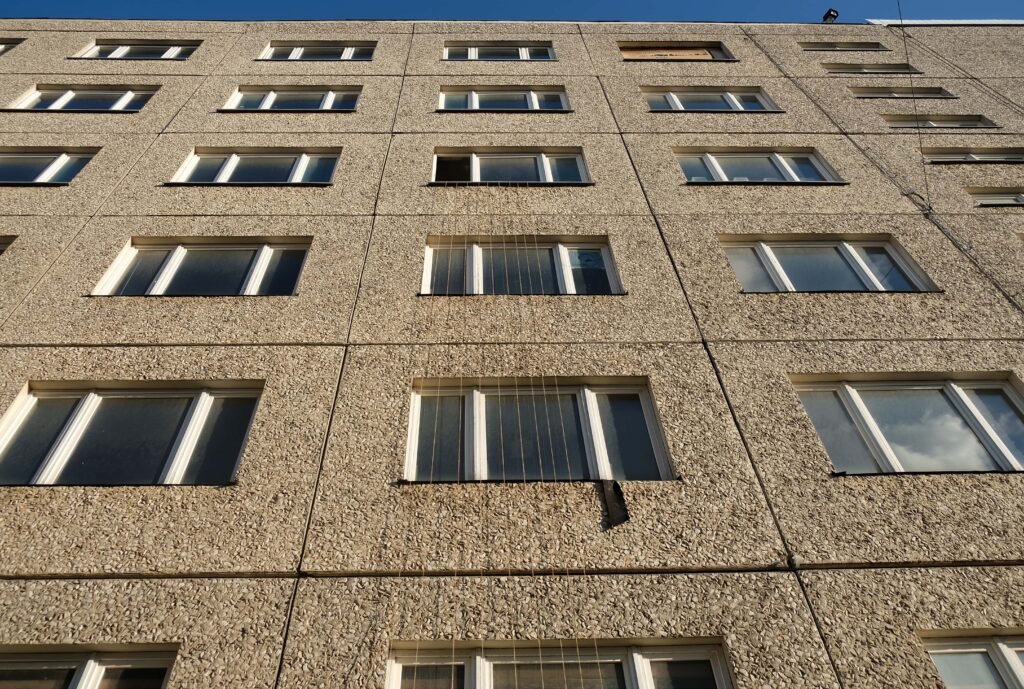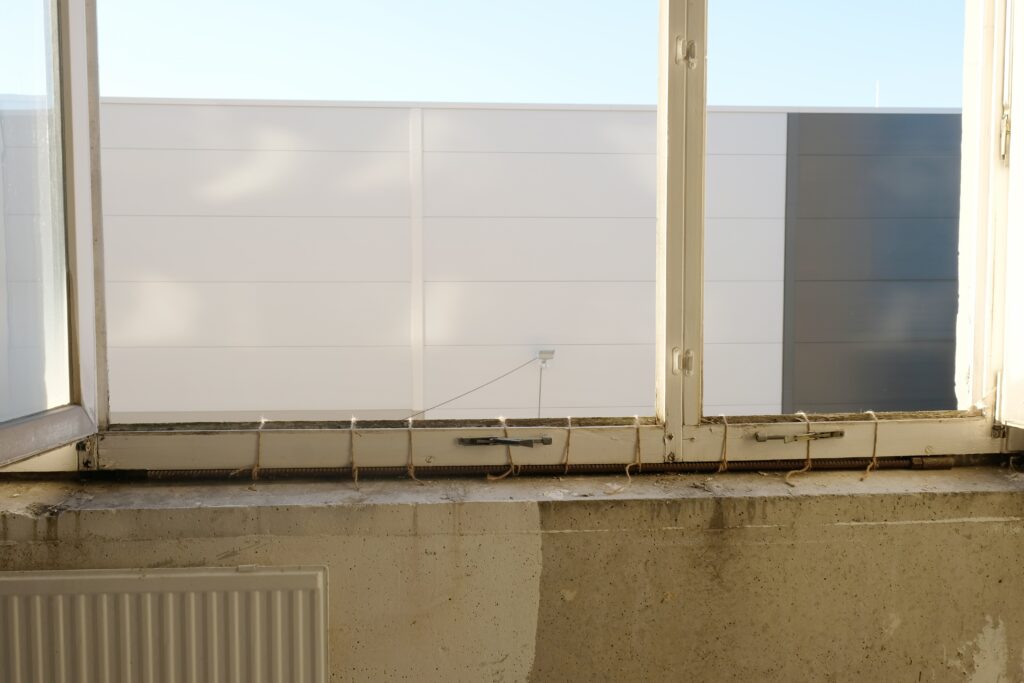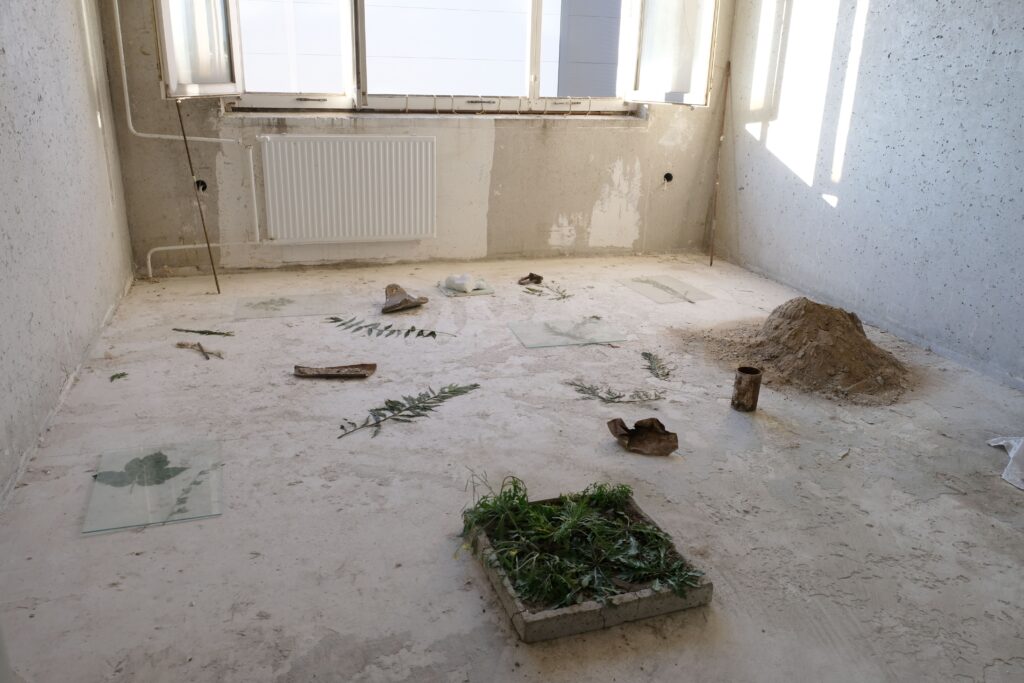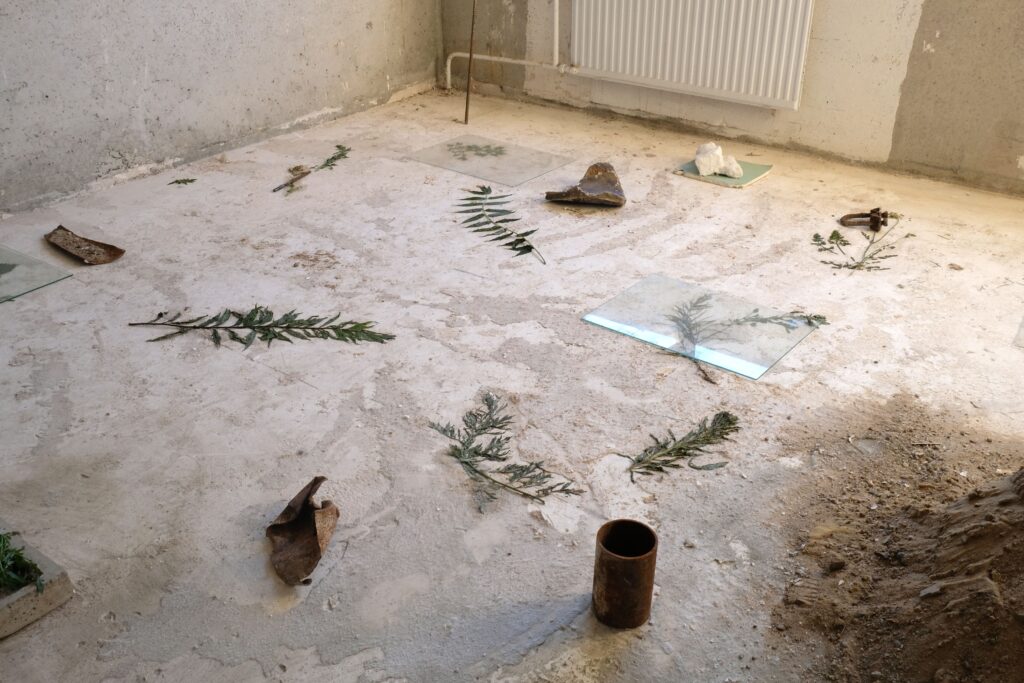Bodenwirtschaft (mit Hopfen für Johan), 2021
Recall the smell of rain on concrete.
Around a vacant prefab in Berlin grow many hardy plants, among ancient species (common horsetail), familiar invaders (Ailanthus altissima) and feral eatables (arugula, hops).
Rumour has it the building will be sustainably renovated. This renovation would reuse old materials–among which are not the fragments of ceramic pipes and steel sheets in this exhibition. Instead, those are breaking down into elements, perhaps building up into new earth.
The arugula in the concrete planter has been planted in its original soil, divided in three representative regions: a soil grey from the mix with cement; gravel with a thin underlayer of rich soil; and the place's typical sandy soil. Among the fuzzy rests of old carpet glue on the floor are the leaves, stems, and blossoms of several plants that make part of the prefab's current ecosystem. The twine stretching from the ground up to the room's window on the fourth floor supports the hops found behind the building to grow up high. Glass, sand, concrete–ultimately, sand–hold the room together.
Bodenwirtschaft (mit Hopfen für Johan), or, in nonliteral translation, Groundwork (with hops for Johan), is on the border between memorialisation and utilisation of the “natural” or botanical and material state of the site. The archivistic collection and the cultivation of these lifeforms are comparable gestures– but the plants are poisoned from the ground; the catalogue is incomplete like a shattered fossil, like the traces of carpet on the floor.







